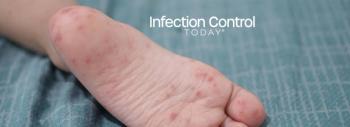
McKesson and Clorox Partner on Infection Control in Hospitals
ATLANTA -- Amid growing concern about the rise in hospital-acquired infections (HAIs), McKesson Provider Technologies and the Clorox Company today announced a strategic relationship focused on helping customers enhance patient safety. Clorox and McKesson together will develop and promote disinfection protocols for mobile equipment and handheld electronic devices. These devices which include computers on wheels, tablet PCs, mobile medication cabinets, and hand-held bar-code scanners for medication administration, specimen tracking and blood verification are commonly used by clinicians in and between patient rooms.
McKesson will team with the Clorox Company to offer jointly developed disinfection protocols in conjunction with McKessons Patient Care Advantage solution. The solution, which drives a one patient, one care team, one plan approach to care delivery, is designed to enable hospitals to provide safer, more efficient care. More than 2 million clinicians nationwide rely on McKesson solutions, and each year more than 100 million medications are scanned at the bedside using McKesson solutions. The Clorox Company manufactures a complete line of hospital-grade surface-disinfecting products and alcohol-based hand sanitizers.
McKesson is the only single-source provider of integrated software, automation, packaging, distribution and consulting solutions that help organizations improve efficiency and prevent medication errors at each stage where they can occur, said Mary Beth Navarra, RN, MBA, chief patient safety officer for McKesson Provider Technologies. Our solutions also address broader patient safety issues by helping to improve communication among caregivers, reduce variability in care and develop a metric-driven culture focused on performance improvement, said Navarra. Infection control is a key element of patient safety. By collaborating with Clorox, we can help customers lower the risk of inadvertently transporting harmful microorganisms among patient rooms.
For example, surfaces that are touched frequently such as door knobs, bed rails, mobile devices and lavatories may accumulate microbes, according to the Centers for Disease Control and Prevention (CDC), which recommends adhering to a regular schedule of cleaning and disinfection as an important adjunct measure to hand hygiene.
Surface disinfection and proper hand hygiene both provide necessary lines of defense for helping to reduce the spread of pathogens that can lead to hospital-acquired infections, said Craig Stevenson, general manager of Clorox Professional Products. In working closely with hospitals, weve found that explicit protocols for disinfection are very important to ensuring compliance and reducing the risk of infection.
Recent studies have shown that educational interventions can significantly increase cleaning rates of frequently touched surfaces (Carling et al, Clin Infect Dis, 2006; Carling et al Amer J Infect Control, 2006; and Carling et al. J Hosp Infect, 2008).
Healthcare providers purchase technology to improve patient safety and reduce medical errors, said Navarra. By working with the Clorox Company, we want to help customers take the needed precautions to maintain safer environments.
Source: McKesson Corporation and the Clorox Company
Â
Â
Newsletter
Stay prepared and protected with Infection Control Today's newsletter, delivering essential updates, best practices, and expert insights for infection preventionists.






